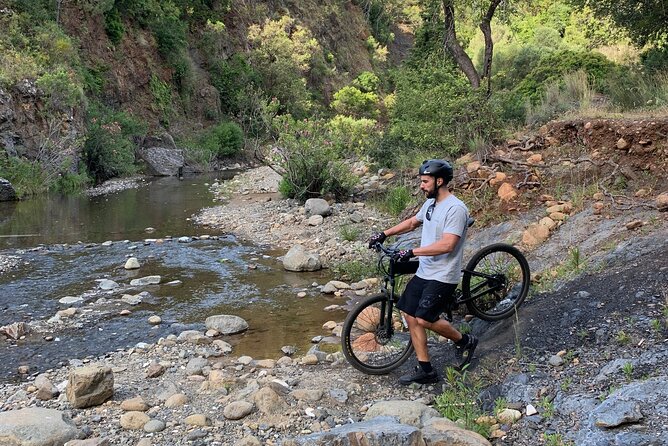When Is Saturn Visible? A Guide To Spotting The Ringed Planet
Have you ever looked up at the night sky and wondered if you could catch a glimpse of Saturn? With its iconic rings, Saturn is one of the most recognizable planets in our solar system. If you’re eager to set your eyes on this stunning celestial body, then look no further! This guide will provide all the information needed to help you spot Saturn when it’s visible in the night sky. So break out your telescope and get ready for an unforgettable journey through space!
Observing Saturn:
Discovering the Mystery of Its Rings
The grandeur and beauty of Saturn is undeniable; its iconic rings glimmer majestically in space, captivating astronomers for centuries. It’s no surprise that it has been a subject of fascination since Galileo first observed it in 1610 with his rudimentary telescope. But what do we know about these mysterious rings? What makes them so unique?
To begin with, the rings are composed mostly of small chunks of ice and dust particles. These particles range from microscopic grains to house-sized boulders, all orbiting around Saturn at their own speeds along different paths according to their individual masses. The most prominent feature among these icy bodies is the Cassini Division – an 800-kilometer wide gap between two major bands discovered by Giovanni Domenico Cassini himself in 1675. Although this division may appear empty when viewed through smaller telescopes, powerful instruments reveal countless numbers of tiny moonlets within its boundaries!
Along With the Cassini Division, there are several other notable features on Saturn’s rings including spokes (short lived radial structures), kinks (disruptions caused by gravitational interactions) and warps (elongated vertical ridges). These gorgeous formations have been studied extensively over the past few decades and continue to inspire awe amongst scientists today!
- The spokes are short-lived radial structures that can be seen moving across Saturn’s ring plane.
- Kinks are disruptions caused by gravitational interactions between moons or asteroids passing close by.
- Warps occur when elongated vertical ridges form in portions of the ring due to uneven gravitational forces.
Overall, observing Saturn has revealed many mysteries about its complex system that still baffle even experienced scientists today. While much progress has been made gaining insight into our solar system’s second largest planet – more than four hundred years since Galileo first laid eyes upon it – there is still plenty left for us to explore!
Equipment Required:
When it comes to preparing for a camping trip, there is a lot of equipment you will need to bring. Although the items you pack may vary depending on your personal preferences and the type of camping you’re doing, most trips require some basics that should be included in any packing list.
Tents. A tent is essential for providing protection from wind and rain. Look for one that’s lightweight yet durable enough to withstand harsh weather conditions. Make sure you choose one that can fit everyone comfortably; otherwise, sleeping arrangements could become tricky! Plus, don’t forget tents stakes and guy lines if necessary.
Sleeping bags. Packing along a good quality sleeping bag will ensure maximum comfort during the night hours at camp. Consider going with an all-season model so it can handle cold temperatures as well as warm ones — many come with temperature ratings so look out for those when shopping around! If necessary, also think about bringing additional blankets or pillows too — extra layers always help keep you cozy even after the sun has gone down!
Cooking supplies. Whether you plan on using gas stoves or open fire cooking methods, make sure to bring along all your cookware necessities such as pots, pans and utensils (forks/spoons). It’s also wise to include non-perishable food items like trail mix or granola bars in case your meals take longer than expected – snacks are great morale boosters after long hikes too! Lastly don’t forget matches/lighters if needed; these will come in handy when starting up fires for warmth or boiling water over an open flame.
Best Time to See Saturn:
One of the most stunning celestial objects, Saturn is a must-see for any astronomy enthusiast. It’s visible from Earth with the naked eye and can be seen in detail with an average telescope. So when’s the best time to see this gas giant?
The Northern Hemisphere
In the northern hemisphere, Saturn is usually visible during fall and winter months. The planet rises in mid to late evening hours around September or October and sets by early morning in March or April. Around December/January it will reach its highest point above horizon before dawn – making it ideal viewing conditions! This also coincides with dark skies which further enhances viewing pleasure. During these times you can expect clear views of Saturn’s rings along with some of its largest moons like Titan and Rhea – both easily spotted through binoculars or small telescopes.
The Southern Hemisphere
Down south, Saturn appears during warmer months such as springtime (September) until early autumn (April). Its rise happens earlier than up north so if you plan on catching a glimpse make sure to head out just after sunset – preferably at least two hours afterwards for optimal views! Unlike their northerly counterparts, southern viewers have more favourable weather conditions year round which means they’ll get better visibility even during brighter summer nights due to less humidity blocking light sources from space. With that being said though, you should still try your luck between April-June where it reaches its peak altitude in the sky allowing for excellent detailed observations without much interference from other stars or planets nearby!
- Summer Months: June-August
Though not quite as high as mid Spring/early Autumn times mentioned above; July & August offer decent viewing opportunities due to lighter evenings & longer exposure periods available throughout those months – however there are no guarantees so do keep an eye out for clouds which may hinder your efforts!
Planetary Alignments and Phases of the Moon:
Planetary Alignments
The alignment of the planets in our solar system has an impact on us here on Earth, as they are all connected by gravitational forces. When two or more planets line up together in the sky, it can cause powerful energetic shifts that influence life on Earth. The most common alignments involve a conjunction between two or more planets, which is when they appear close to each other from our perspective. These conjunctions have been linked with significant events such as extreme weather patterns and political unrest.
Other planetary alignments include oppositions, when two planets appear across from each other in the sky; squares, when four or more planets form a 90-degree angle; and trines and sextiles which occur when three or six planets form 120-degree angles with each other. Each type of alignment has its own unique effects depending on which planet is involved and their position relative to one another. For example, a Mars/Jupiter opposition could signify increased conflict while a Venus/Sun conjunction could bring about feelings of love and harmony.
Phases of the Moon The phases of the moon also play an important role in influencing activity here on Earth – from ocean tides to human behavior! As we know, there are eight distinct phases: new moon (dark), waxing crescent (growing light), first quarter (half lit), waxing gibbous (nearly full), full moon (fully lit), waning gibbous (decreasing light), last quarter( half dark) ,and waning crescent( fading away).
Each phase brings different energies into play as well as physical effects that range from subtle mood shifts to drastic changes in temperature during some months of the year known as “heat moons” or “cold moons” due to their warmer than usual temperatures at night during certain times of year.. A full moon can also be associated with heightened emotions around relationships whereas a new moon usually symbolizes new beginnings and fresh starts for those who take advantage of its energy power boost!
Location and Direction to Look for Saturn in the Sky:
The planet Saturn is one of the most interesting and breathtaking objects to observe in the night sky. It has been a source of fascination for astronomers and sky-gazers since ancient times, with its impressive rings being particularly captivating. But where can you find it?
The best way to locate Saturn is by looking up into the night sky at certain times during the year. When visible, it will appear as an orangey-yellowish dot that stands out quite prominently against other nearby stars. The easiest way to identify it is by using a star chart or app which will show exactly where it needs to be located in relation to other planets and celestial bodies. This makes locating Saturn much easier than if you were just relying on your eyes alone.
To get an even better view of this incredible planet, consider using a telescope. With a good quality scope, you can clearly see the stunning ring system around Saturn that sets it apart from all other planets in our solar system. Telescopes also allow you to magnify distant stars and galaxies so they appear larger than what they would look like without any magnification devices. In addition, telescopes enable observers to detect subtle details such as surface features on far away moons or faint comets passing through our cosmic neighborhood.
As long as there are clear skies at night time, anyone should have no trouble finding Saturn with either their naked eye or with the aid of special equipment like binoculars or telescopes. Its majestic beauty never ceases to amaze those who take time out of their day just peer up at its brilliance – even if only for few moments!
How to Locate Saturn Visually Through a Telescope or Binoculars?:
Finding Saturn Through a Telescope or Binoculars
Locating the planet Saturn through a telescope or binoculars is an exciting experience for any astronomer. When seen up close, it’s possible to observe its majestic rings and other features with remarkable detail. But before being able to admire this beautiful sight, you have to find the right spot in the sky first.
To locate Saturn visually through either of these devices, start by finding out when it will be visible in your area. You can do this by consulting an astronomical chart which contains information about celestial objects’ positions at different times throughout the year – depending on your location and season. Once you know when to look for it, make sure that you are observing from an area with clear skies and no light pollution if possible as these two factors will impact visibility significantly.
Now comes the actual locating process itself: Begin by pointing your telescope towards where Saturn should be located according to what was indicated on your astronomical chart – usually near one of the bright stars of its constellation (which is called Sagittarius). Then adjust its focus until you are able to see some kind of circular shape since that would indicate that you have successfully found our distant neighbor! If using binoculars instead, try holding them steady while moving around slowly until something resembling a disc appears in view – then increase zoom as needed until details become more apparent.
Once positioned correctly, take advantage of its magnified power to observe all kinds of features like cloud bands across its surface or even hints at weather conditions happening far away from Earth!. Enjoy such powerful experiences knowing that those same sights were observed centuries ago without modern technology – except perhaps imagination!
Tips for Viewing Saturn Under Different Conditions:
The twinkling stars of the night sky are a sight to behold – and Saturn is one of them. This gas giant is one of the most iconic planets in our Solar System, with its beautiful rings that stretch out from its equator. It’s no wonder why it has captivated humanity since ancient times!
When viewing Saturn, you won’t be able to see any details beyond its disc-like shape and distinctive rings. However, there are certain conditions which can make it easier for viewers to observe more features on this planet. Here are some tips:
- Viewing Conditions: Clear skies with minimal light pollution provide the best opportunity for seeing Saturn as clearly as possible.
- Telescopes: A telescope will help magnify your view significantly and enable you to see much more detail than would otherwise be visible with just your eyes.
- Time of Night: The best time for observing Saturn is when the planet is at opposition (when it’s directly opposite from Earth). During this time, observers can expect a better view due to increased brightness.
These tips may help improve your chances of getting an amazing look at Saturn during different conditions. Better yet, if you have access to a powerful enough telescope or binoculars then things like surface features and atmospheric clouds might even become visible! Many amateur astronomers use filters designed specifically for viewing planetary bodies such as Jupiter or Mars in order to enhance their views further still – these same filters often work well on Saturn too!
But regardless of how we go about getting our view, one thing remains true – seeing up close something so distant offers us a unique glimpse into outer space unlike anything else here on Earth. With all these tips in mind now all that’s left is actually getting out there and doing some stargazing…so don’t forget your coat!





